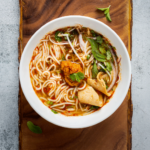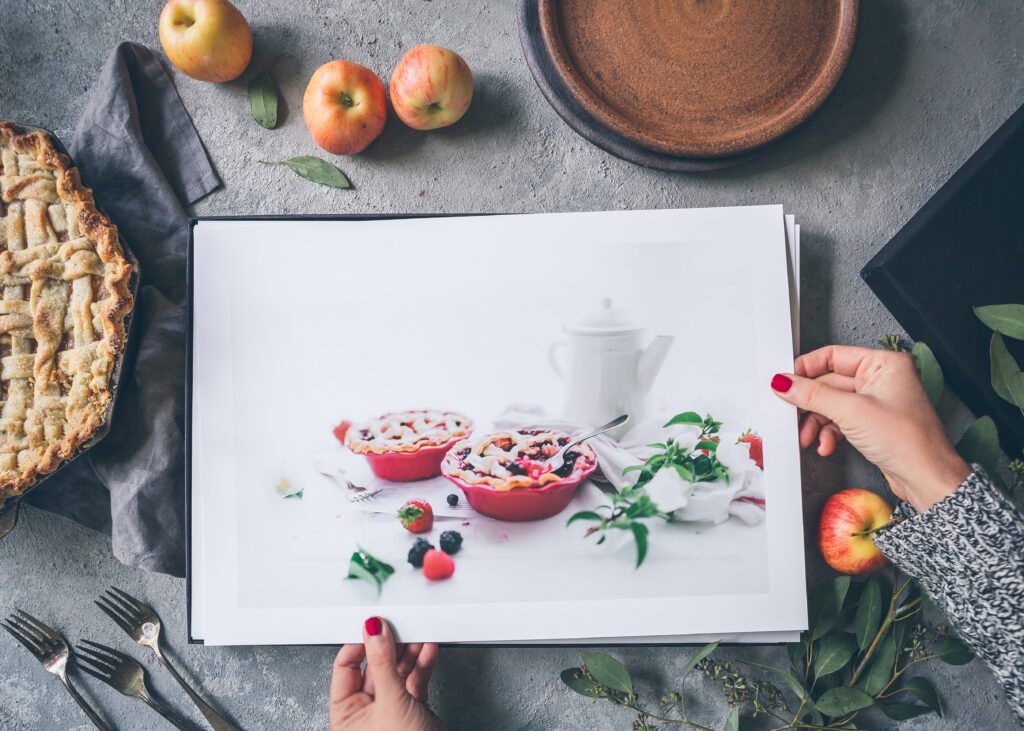
Hopefully my last article, “High-Level Beginner’s Guide to Chinese Cuisine,” left you salivating for authentic Chinese cuisine. In a follow-up, here’s my list of the best sources to learn more about Chinese cooking:
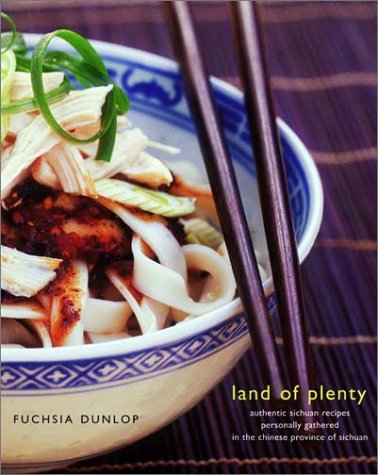
When in doubt, trust any cookbook written by Fuchsia Dunlop.
An Oxford native, Fuchsia Dunlop became interested in China while working the East Asia desk for the BBC Monitoring Unit at Caversham. She pursued her postgraduate degree at Sichuan University and extended her stay to take a three-month chef’s training course at the Sichuan Higher Institute of Cuisine making her the first Westerner to do so. Dunlop became obsessed with China’s food and spent years traveling around China and collecting recipes. Her first book, Land of Plenty introduced many Westerners to Sichuan food. Her second book, Revolutionary Chinese Cookbook, did the same for Hunan food. What I love about Dunlop’s cookbooks is she never sacrifices authenticity yet does a great job making these lesser-known cuisines approachable. For example, all four of her cookbooks start with explanations of typical ingredients and condiments, detailed pictures, what brands to purchase, and a shopping list for a well-stocked pantry. My favorite cookbook of hers is Every Grain of Rice which is a collection of home cooking recipes from many regions of southern China, with a Sichuan slant. Paging through it always makes me feel nostalgic as I see many of the dishes my mom used to cook for the family while I was growing up.
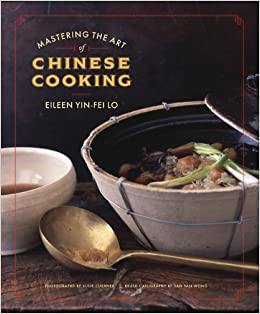
When you’re ready for an advanced education in Chinese cooking.
Eileen Yin-Fei Lo showcases her decades of Chinese cuisine knowledge in her opus magnum, Mastering the Art of Chinese Cooking. Initially, the three sections of this book might appear confusing – The Market as Classroom, The Market Becomes Regional, and The Market Particular. However, Lo has intentionally structured this book as a series of lessons (from easy to hard) to not only build the reader’s skill, but also knowledge and confidence. She starts with how to create a Chinese pantry and the essential cooking tools of Chinese cuisine. Then Lessons 2 through 6 walk you through basic foundational recipes (making perfect rice, basic stocks, flavored oils) and techniques (stir-frying, steaming, poaching, clay pot). Then Lo continues with basic soup and noodle recipes, using some of the basic ingredients and techniques she just covered. Section 2 is what I call “beginner-intermediate” dishes – with more foundational recipes such as roasted chicken and XO sauce. Readers will learn how to make various bread recipes, rice recipes, and a selection of dishes from different regions of China. Section 3 is the “intermediate-advanced” dishes with exotic ingredients and exotic techniques. Even I don’t recognize half the ingredients used in some of these dishes. Many of them are special-occassion or banquet dishes such as Shark’s FIn Soup or Peking Duck. Throughout all three sections, Lo meticulously walks through the techniques, ingredients, equipment, and philosophies that define Chinese cuisine. She includes essays on the cultural context and deep dives into individual ingredients–what they do, why they’re used, and how they interact with other ingredients to bring out flavors, textures, and aromas. This cookbook is also filled with beautiful color photography and brush calligraphy drawings of step-by-step techniques–it makes a great gift to any aspiring Chinese cooks in your circle of family and friends.
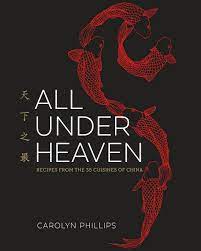
When you’re already comfortable with Chinese cooking techniques, and now looking for many, many recipes.
Try All Under Heaven: Recipes from the 35 Cuisines of China by Carolyn Phillips. Practically speaking, there are much more than just 35 cuisines–more like hundreds of Chinese cuisines. However, All Under Heaven, is the best cookbook I’ve seen that tries to cover as many regional dishes as possible. This cookbook is definitely not for a Chinese cuisine novice–the recipes start on Page 1 and there’s about 300 of them. There is a “Fundamentals” section in the back of the book but the meat of the book are recipes that travel from the Manchurian Northeast through the Yangtze River to the Arid Lands. Phillips includes historical and cultural context interspaced between the recipes so readers can learn as well as cook. Additionally, I find Phillips recipes are written with clear, step-by-step instructions and breaks down unknown, complex recipes gracefully without sacrificing authenticity. She does make the occasional concession of hard-to-find ingredients and offers the best homemade or American alternatives. Many times I’ve had to text my mom to mail me an ingredient I can’t find in Texas so I can make the most authentic version of the dish as possible. I’ve had this cookbook for years and am only halfway through exploring all of Phillips recipes so I guarantee it’ll keep you entertained for a long time.
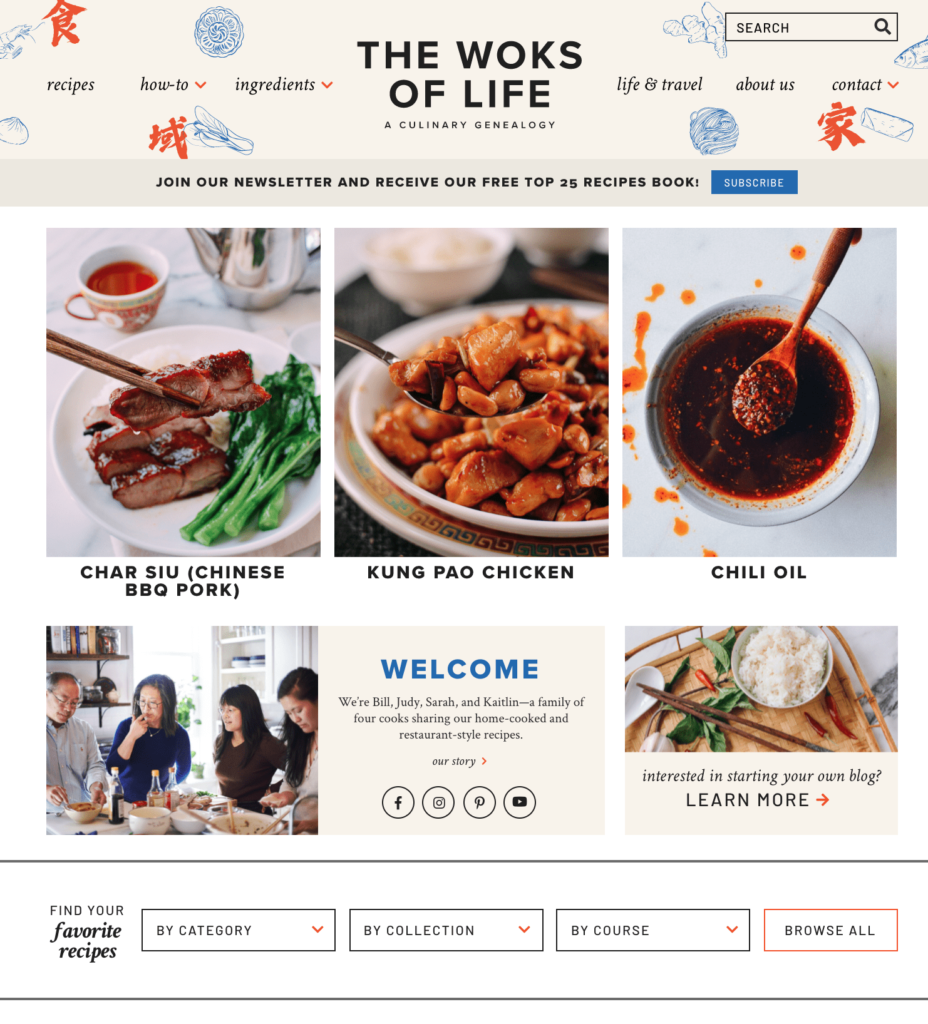
When you haven’t bought a cookbook in years, because duh, the Internet.
I’m a big fan of cookbooks! I think a book format is best for allowing authors to develop themes, lessons, and context through cooking. However, I will grant that sometimes you just want a quick recipe you can pull up on your laptop. My favorite blogs are The Woks of Life and China Sichuan Food. Both specialize in southern Chinese food; The Woks of Life is run by a family of four (two parents and two daughters) who use the blog to stay in touch with each other while they’re separated by a few thousand miles. You’ll find some fusion dishes in their recipe index but also many authentic Chinese dishes I remember from my childhood. Elaine, the owner of China Sichuan Food, is one of the only few blogs by a Chinese person living in China with an English blog. She obviously focuses on Sichuan Food and I love browsing through her blog because it’s a good representation of the foods that young professionals in Chengdu favor for lunch and dinner. Alternatively, if you’re more a visual learner – my favorite Chinese cooking Youtube channel is Chinese Cooking Demystified–they walk through cooking Chinese dishes from all over China with to-the-point step-by-step instructions and explanations. For entertainment purposes I also watch James’ channel, since his videos are in Chinese and don’t contain subtitles I can’t recommend his channel as a good way to learn how to cook Chinese food. However, just by watching him cook some dishes I’ve picked up tips and tricks along the way. For insanely escapist content, watch Liziqi who uses beautiful cinematography to showcase her process of cooking Sichuan food in her rural village from beginning to end. And when I say beginning, I mean her videos typically start off with her planting the ingredients for the upcoming dish so there’s about a 0% chance you’d be able to replicate what you see. However, her videos are so beautiful and provide a (glamourized) glimpse into life in rural Sichuan so they’re worth checking out.
And there it is! Also don’t forget, typically the best way to learn any cuisine is in first person, so whether it’s your Chinese mom, your grandmother, or your friends–ask them what their favorite dish was growing up and how to cook it. I know I’ve probably missed dozens of invaluable sources of authentic Chinese recipes and I’d love to know which other cookbooks, blogs, or Youtube channels I should check out so let me know in the comments below!
 Helen works in the tech industry at “Silicon Hills” in sunny, weird Austin, Texas. She balances all that left-brain activity with freelance writing about the Texas restaurant scene and new food trends with a focus on Chinese cuisine. In her free time she renovates 1980s homes, films educational Youtube videos teaching analytics, and develops “no-code apps.” Instagram: @helen.w.xu
Helen works in the tech industry at “Silicon Hills” in sunny, weird Austin, Texas. She balances all that left-brain activity with freelance writing about the Texas restaurant scene and new food trends with a focus on Chinese cuisine. In her free time she renovates 1980s homes, films educational Youtube videos teaching analytics, and develops “no-code apps.” Instagram: @helen.w.xu
Photo credit: Brooke Lark on Unsplash

